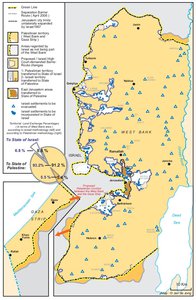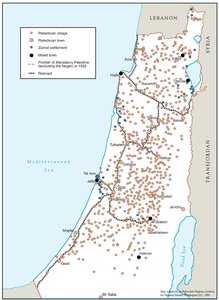THE BEGINNING OF THE BRITISH MANDATE, 1920
Map Details
In April 1920, the Supreme Council of the League of Nations, in a decision reached at the San Remo Conference, awarded to Britain the control of an uninterrupted territorial swathe running from the Persian Gulf to the Mediterranean, being administrative control over Palestine, Transjordan and Mesopotamia (Iraq). Mandate Palestine was to be ruled by a civil administration - replacing the military one in place since 1917 - headed by a High Commissioner and based in Jerusalem. Though the terms of the Mandate were not formalized for three years, the military administration was terminated in 1920. The British Mandate was to last from July 1920 until May 1948. The establishment of the Mandate came at a time when British approval of the Zionist program of establishing in Palestine a Jewish national home was becoming apparent. Figures compiled by the British military administration in 1918 pointed to a Jewish population in Palestine of 58,728 - less than 10% of the total. Zionist immigration following the establishment of the military administration had not increased markedly, but with the creation of the Mandate, whose first High Commissioner, Sir Herbert Samuel, was a Jew and a great supporter of the Zionist platform, Zionist diplomatic efforts were immediately rewarded. One of Samuel’s first acts was the approval of 16,500 Jewish immigration certificates; the local Zionist leadership reported to WZO head Chaim Weizmann, that the Mandate was being, “enthusiastically welcomed” by the community. In 1920, Jewish immigration in fact rose by an unprecedented 450%, leading many Zionists to believe the British Mandate was to be simply an instrument for the fulfillment of the Balfour Declaration. Despite these important steps in empowering the Zionist movement, few European Jews were attracted to the program and even when the Zionist immigration reached these peaks, the vast majority of emigrating Jews made their way to the US. Of every 1,000 Jews in the world, only four made their way to Palestine during these immigration waves, impressing upon the WZO the imperative of expanding their political program abroad. Since 1914, the WZO had adopted the stricture of so-called, “pure Jewish settlement” in its colonization efforts and strove to dispense with any reliance on non-Jewish labor or expertise. The concept of ‘Jewish labor on Jewish land,’ became a motto of the period and was expressed in London when the Interim Zionist Conference passed the July 1920 resolution to use its influence and funds, “as a means for making the land of Palestine the common property of the Jewish people [and]... to safeguard Jewish labor.” In this atmosphere of growing Jewish exclusivity and increasing immigration, the Histadrut was founded (December 1920). Committed to the WZO’s labor policy, the Histadrut set out to unite and expand the colonial and production forces of the Zionists, while building a “pure Jewish” administrative system in Palestine. At its first session it also resolved “to accept responsibility for setting up a country-wide clandestine and independent defense organization.” In the face of a confidant and rapidly growing local Zionist movement in Palestine, the Palestinian leadership assembled numerous delegations and repeatedly petitioned both the local British administration and London, demanding that Britain live up to its commitments, slow immigration and examine the future of Palestine according to its demography and history. Their efforts were largely in vain. Leaders who raised their voices in opposition to British pro-Zionist policy were often removed from office, and the British prevented the Palestinian National Congress (the national movement’s newly formed council) from holding its second conference, fearing it might awaken the dissent of the ‘street.’ Zionist land acquisition, guided geographically by the availability of pliant or ‘bribable’ Ottoman landlords, focused on the arable northern and coastal regions. There, Palestinian tenant farmers were dispossessed of their livelihoods to make way for an expanding series of settlements as the WZO and its agencies sought to create the largest contiguous stretch of Jewish ownership possible. By 1921, with over 600,000 dunums of land already consumed by 71 Jewish colonies, immigration quotas continued to rise, as did tensions.
Related Maps
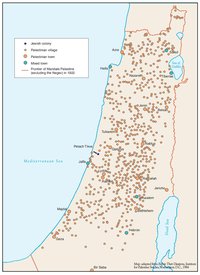
OTTOMAN PALESTINE, 1878
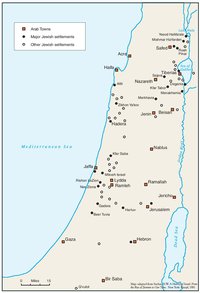
ARAB TOWNS AND JEWISH SETTLEMENTS IN PALESTINE, 1881-1914
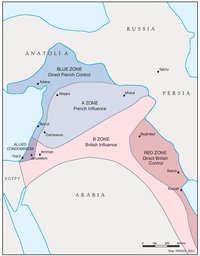
THE SYKES-PICOT AGREEMENT, 1916
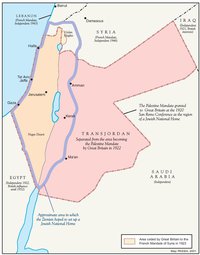
PALESTINE UNDER THE BRITISH MANDATE
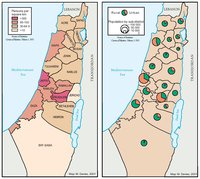
THE DEMOGRAPHY OF PALESTINE, 1931
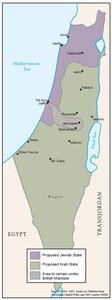
THE PEEL COMMISSION PARTITION PROPOSAL, 1937
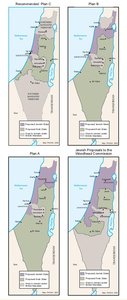
THE WOODHEAD COMMISSION PARTITION PROPOSALS, 1938
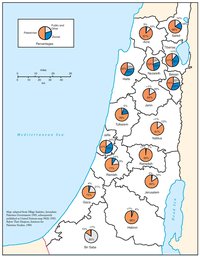
PALESTINIAN AND ZIONIST LANDOWNERSHIP BY SUB-DISTRICT, 1945
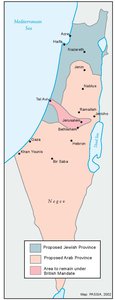
THE MORRISON-GRADY PARTITIONED TRUSTEESHIP PLAN, 1946
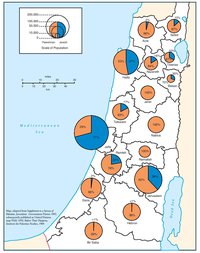
POPULATION OF PALESTINE BY SUB-DISTRICT, 1946
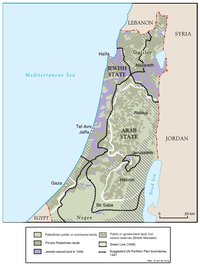
LAND OWNERSHIP IN PALESTINE, 1948
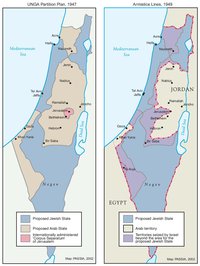
THE UNGA PARTITION PLAN, 1947 – THE 1948 WAR & THE 1949 ARMISTICE LINES
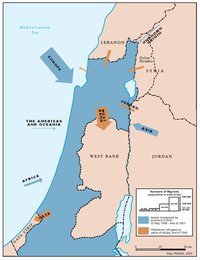
POPULATION MOVEMENTS, 1948-1951
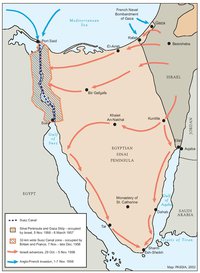
THE SUEZ WAR, 1956
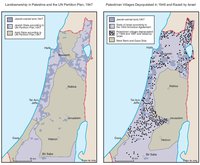
LAND OWNERSHIP IN PALESTINE AND THE UN PARTITION PLAN - PALESTINIAN DEPOPULATED AND DESTROYED VILLAGES, 1948-1949
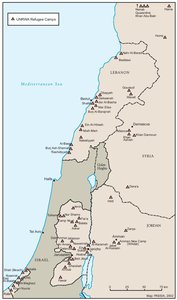
THE PALESTINIAN DIASPORA, 1958
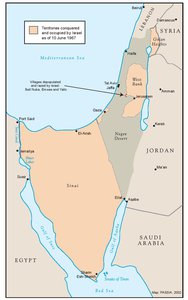
THE NEAR EAST AFTER THE JUNE 1967 WAR
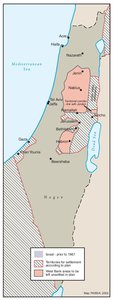
THE ALLON PLAN, JUNE 1967
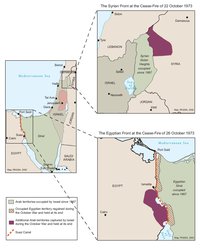
THE OCTOBER WAR, 1973
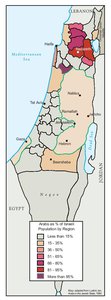
THE PALESTINIANS INSIDE ISRAEL, 1977
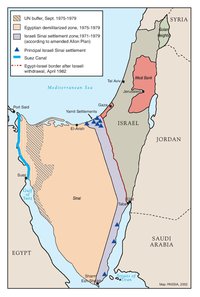
THE CAMP DAVID ACCORDS, 1978-1979
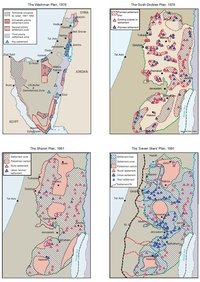
ISRAELI SETTLEMENT MASTER PLANS, 1976-1991
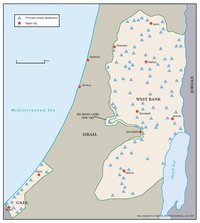
THE 1991 MADRID PEACE CONFERENCE & ISRAELI SETTLEMENTS
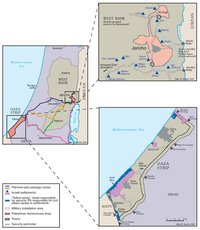
GAZA-JERICHO (OSLO I) AGREEMENT, CAIRO, 4 MAY 1994
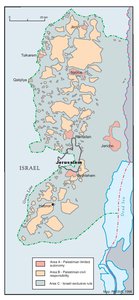
INTERIM (OSLO II) AGREEMENT, TABA, 28 SEPTEMBER 1995
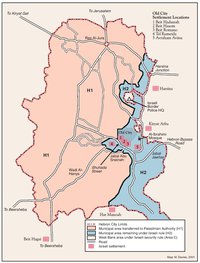
HEBRON PROTOCOL, 15 JANUARY 1997
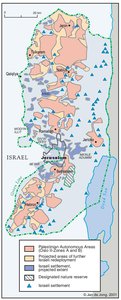
WYE RIVER MEMORANDUM, 23 OCTOBER 1998
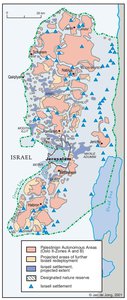
SHARM ESH-SHEIKH AGREEMENT, 4 SEPTEMBER 1999
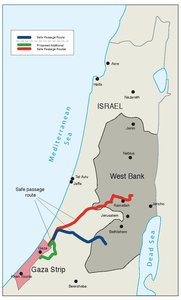
PROTOCOL CONCERNING SAFE PASSAGE BETWEEN THE WEST BANK AND THE GAZA STRIP, 5 OCTOBER 1999
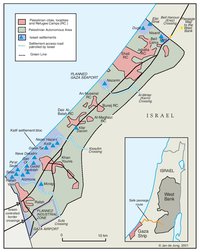
GAZA, 2000
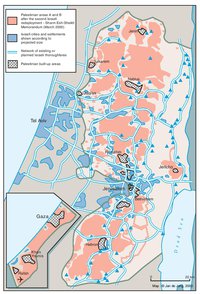
WEST BANK AND GAZA STRIP, MARCH 2000
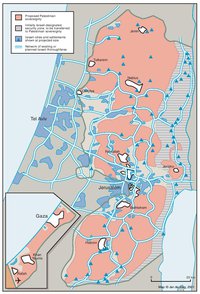
CAMP DAVID PROJECTION, JULY 2000
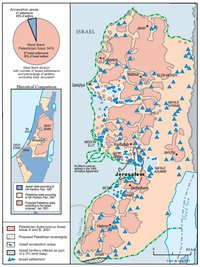
TABA TALKS PROJECTION, JANUARY 2001
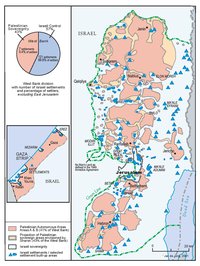
THE SHARON PROPOSAL, SPRING 2001
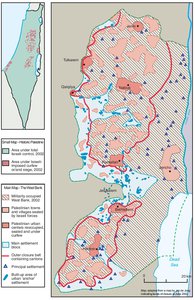
THE REINVASION OF THE PALESTINIAN TERRITORIES, 2001-2002
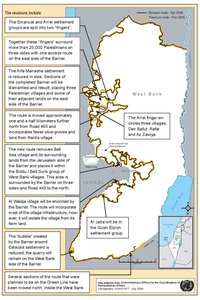
THE ROAD MAP, 2003
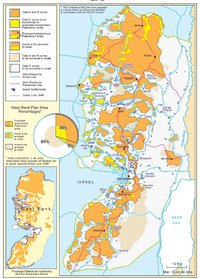
THE GENEVA INITIATIVE AND ACCORD, 2003
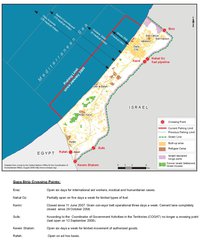
THE ISRAELI DISENGAGEMENT PLAN, 2003-2005
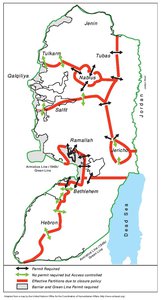
AGREED DOCUMENTS ON MOVEMENT AND ACCESS FROM AND TO GAZA, 2005
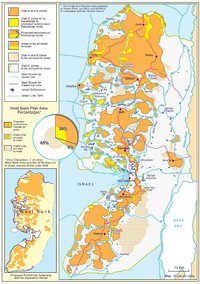
THE SETTLERS' PLAN FOR PALESTINIAN AUTONOMY, 2006
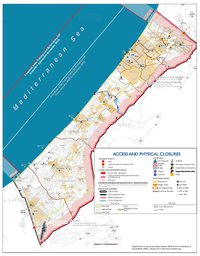
THE GAZA STRIP TODAY (2014)
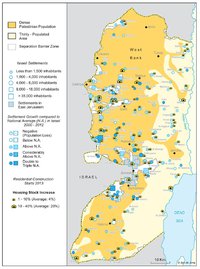
THE WEST BANK TODAY (2014)
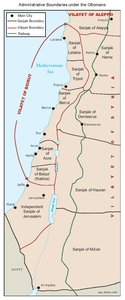
ADMINISTRATIVE BOUNDARIES
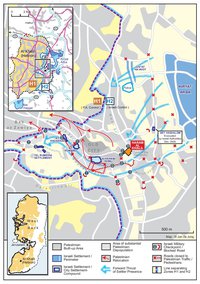
HEBRON
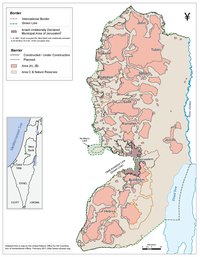
Area C
